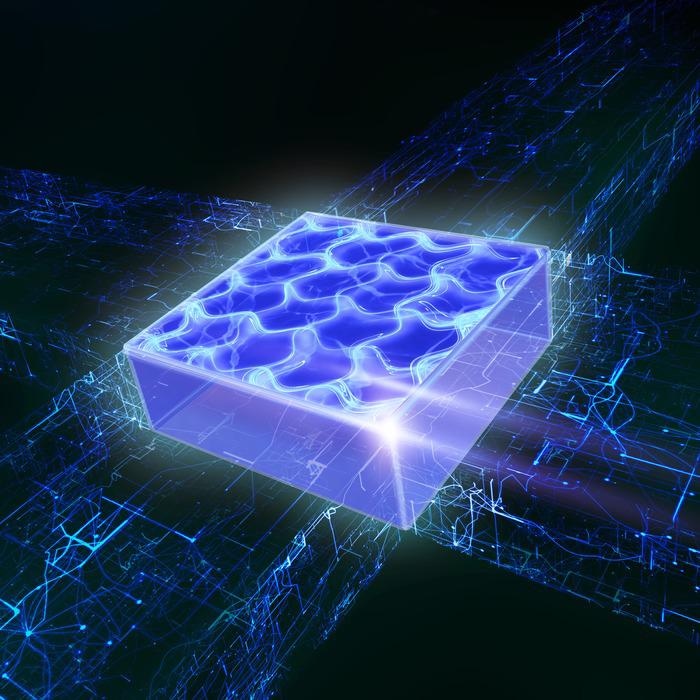Reviewed by Alex SmithAug 19 2021
Quantum gases are ideal for assessing the microscopic consequences of interactions in matter. Now, researchers can accurately control each particle in extremely cooled gas clouds in the laboratory, unraveling phenomena that cannot be seen in the day-to-day world.
 Two-dimensional supersolid quantum gas produced in the laboratory for the first time. Image Credit: IQOQI Innsbruck/Harald Ritsch.
Two-dimensional supersolid quantum gas produced in the laboratory for the first time. Image Credit: IQOQI Innsbruck/Harald Ritsch.
For instance, each atom present in a Bose-Einstein condensate is fully delocalized. This implies that the same atom exists at every point inside the condensate at all times.
A couple of years ago, researchers guided by Francesca Ferlaino from the Department of Experimental Physics at the University of Innsbruck and the Institute of Quantum Optics and Quantum Information at the Austrian Academy of Sciences in Innsbruck created, for the first time, super solid states in ultracold quantum gases of magnetic atoms.
The magnetic interactions make the atoms to self-organize into droplets and organize themselves in a regular pattern.
Normally, you would think that each atom would be found in a specific droplet, with no way to get between them. However, in the supersolid state, each particle is delocalized across all the droplets, existing simultaneously in each droplet. So basically, you have a system with a series of high-density regions (the droplets) that all share the same delocalized atoms.
Matthew Norcia, University of Innsbruck
The bizarre formation leads to effects like frictionless flow even in the presence of spatial order (superfluidity).
New Dimensions, New Effects to Explore
Supersolid states in quantum gases have thus far only been traced as a string of droplets (along a single dimension).
In collaboration with theorists Luis Santos at Leibniz Universität Hannover and Russell Bisset in Innsbruck we have now extended this phenomenon to two dimensions, giving rise to systems with two or more rows of droplets.
Matthew Norcia, University of Innsbruck
This is not just a quantitative development but also significantly widens the research viewpoints.
For example, in a two-dimensional supersolid system, one can study how vortices form in the hole between several adjacent droplets.
Matthew Norcia, University of Innsbruck
“These vortices described in theory have not yet been demonstrated, but they represent an important consequence of superfluidity,” added Francesca Ferlaino.
The study has been published in the journal Nature. It leads to fresh opportunities to additionally examine the basic physics of this exciting state of matter.
New Research Field: Supersolids
Supersolidity was proposed five decades ago and its fascinating characteristics have been widely explored in superfluid helium. Yet, even after decades of theoretical and experimental studies, detailed evidence of supersolidity in this system is still evasive.
A couple of years ago, research groups from Pisa, Stuttgart and Innsbruck individually developed, for the first time, the purported supersolids from magnetic atoms in ultracold quantum gases.
The platform for the new, developing research field of supersolids tends to be the powerful polarity of magnetic atoms, which possess interaction properties capable of developing the paradoxical quantum mechanical state of matter in the laboratory.
The study was funded by the Austrian Science Fund FWF, the Federal Ministry of Education, Science and Research, and the European Union, among others.
Journal Reference:
Norcia, M. A., et al. (2021) Two-dimensional supersolidity in a dipolar quantum gas. Nature. doi.org/10.1038/s41586-021-03725-7.